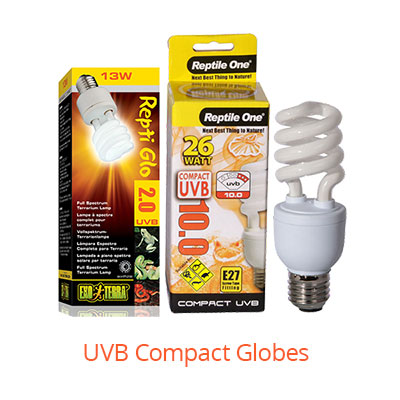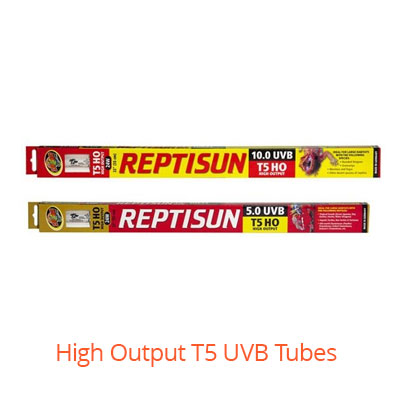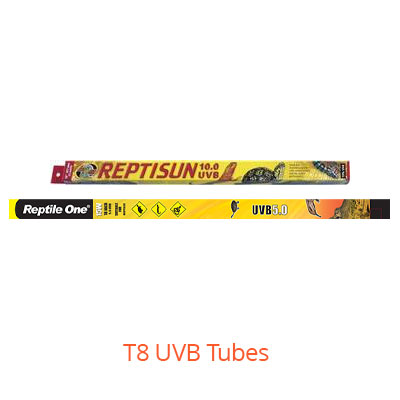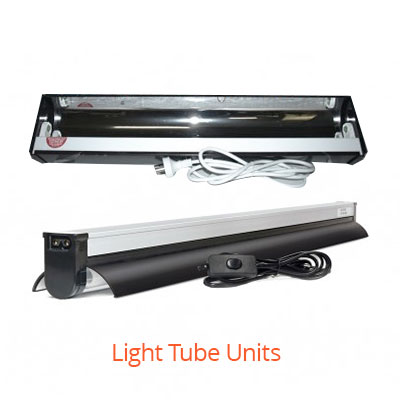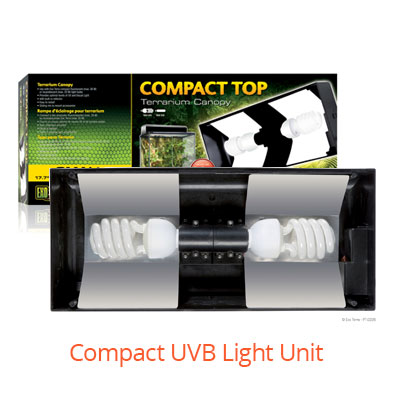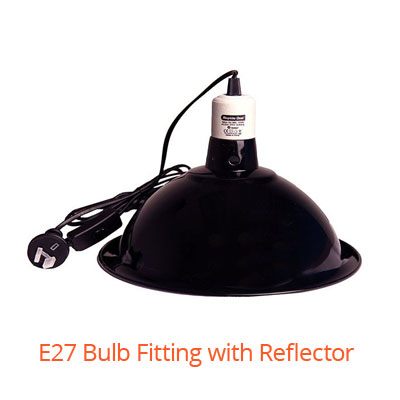Choosing the Right UV Light for your Reptile
By: Leela - Bird & Reptile Team Member On: 27 April 2020
The provision of light and heat is physiologically and psychologically crucial for the majority of reptiles. Humans just recently gained a better understanding of lighting technology for reptiles so you should ensure your setup is up-to-date.
The provision of light and heat is physiologically and psychologically crucial for the majority of reptiles. Sunlight not only provides warmth, it also provides necessary vitamins for good health. Light and heat work together to create the day/night cycle which reptiles rely on to regulate a number of behaviours, including feeding, breeding, basking etc.
This guide can help build your understanding of the different types of UV, and the different lighting products available.
Types of UV
UV light is a natural part of sunlight that is invisible to the human eye, but is generally thought to be perceived by reptiles. UV is classified into three different groups:
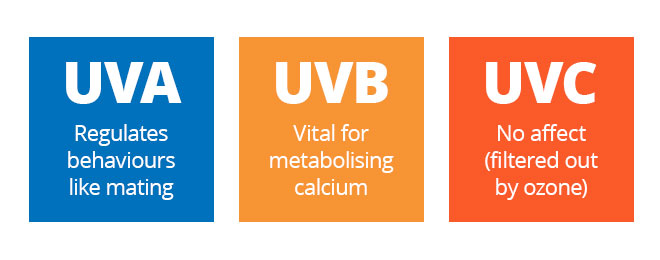
UVA: often correlated with activity of reptiles – helps regulate behaviours such as feeding, mating and similar activities.
UVB: allows the synthesis of vitamin D3. UVB is extremely important in calcium metabolism and bone development / maintenance.
UVC: can predispose to cancer. It is a damaging form of UV that is generally filtered out by the ozone layer.
It is important that we are providing reptiles with both UVA and UVB.
Different Species Require Different UV Exposure
In order to provide the best husbandry for our reptile, it is important that we are providing them with both UVA and UVB. It is also important that the light we are providing is accessible and is of the appropriate strength for that particular species.
For example, a Central Bearded Dragon spends more time basking in the sun than a nocturnal python and will therefore require a higher level of UV exposure.
The strength of the UVB output and the ideal distance between the UVB source and your animal’s back is going to depend on a few factors such as whether the UVB light is used with a reflector, whether it is placed on top of a mesh lid as well as the type of bulb being utilised (compact, T8 tube or T5 tube). Please ensure that there is no glass or plastic between the UVB light and your lizard as in most cases this will block out all UVB. ALL visible lights need to be mounted above the reptile (not to the side) to prevent damage to the eyes.
The different types of UVB lights
Here at Pet City, we most commonly sell T5 and T8 linear fluorescent tubes, as well as compact UVB globes. Each of these have pros and cons and which bulb to use will depend on the species and your enclosure setup.
T5 Linear fluorescent tubes: These are flicker-free high-output UVB tubes and commonly come in 5.0 and 10.0 strengths. A 10.0 T5 tube is highly recommended for reptiles requiring higher UV exposure such as bearded dragons. They are also especially helpful for reptiles in taller enclosures (60cm+) that require a lower UV Index but aren’t the best climbers (such as Eastern Blue Tongue Lizards).
T8 Linear fluorescent tubes: T8 tubes are often more suited to forest-dwelling reptiles and amphibians that don’t require a high UV exposure.
Compact globes: Compact globes produce an area of focused UVB. Unless in a small enclosure, in most cases Pet City does not recommend compact UVB globes as the only UVB source. They are perfect at providing an area of higher UVB in the basking zone, but should be partnered up with a T8 UVB tube for “background UVB.” They are also great at reducing the distance between non-climbing reptiles and the UVB light if using a taller enclosure.
Reflectors & Fittings
As we know, linear fluorescent UVB lights produce light from the entire 360 degrees of the glass cylinder. This means that only approximately half of the light produced is travelling down towards the basking zone, with the rest projected towards the ceiling and walls of the enclosure. A specially designed curved reflector harnesses this otherwise wasted light and reflects it down towards the basking zone, essentially doubling the UV Index and amount of light available to the animal in the basking area. Care should be taken when pairing intense UVB lamps with reflectors, and ideally the UVI would be checked with a UVB meter.
Pet City currently stocks reflectors for T8 and T5 linear tubes, as well as compact top reflectors designed for use with compact UVB lamps.
What happens if I don’t provide enough UV, or if I provide too much?
If your reptile is unable to access enough UVB, this can result in a serious (and unfortunately common) condition known as Metabolic Bone Disease.
On the other end of the spectrum, if an animal with low UV requirements is provided with an intense UV light it can result in eye inflammation as well as cancerous changes. This is why it is important that the correct UVB light is selected, and that the animal has areas of different UVB exposure within the enclosure including complete shade. For this reason, it is recommended that when using a linear fluorescent UVB tube, that the length of the tube is approximately ½ to two-thirds of the length of the enclosure and is placed down the same end as the heat source.
How long should the lights be on for?

UVB and UVA lights should be on for 12-14 hours per day in Summer, decreasing to 8-10 Hours per day in winter for most species.
The sun is still important!
Despite artificial lighting being very effective, it is still important to give your reptile the opportunity to spend time in natural sunlight. If you aren’t able to do this daily, weekly will still be of benefit. Ensure that the reptile is supervised at all times while outside.
it is advised to replace UVB lights every 6 months
Please remember that this is to be used as a guide only. The light appropriate for your reptile’s needs is going to be dependent on a number of factors and what is written may not be correct for your particular setup or situation. Pet City recommends the use of a UV meter which allows the keeper to test the UV levels at different locations of the enclosure. This will also allow you to monitor the change in UVB output of the bulb over time so you know when it needs to be replaced. If you do not have a UV meter, it is advised to replace UVB lights every 6 months.
Have a Question?




